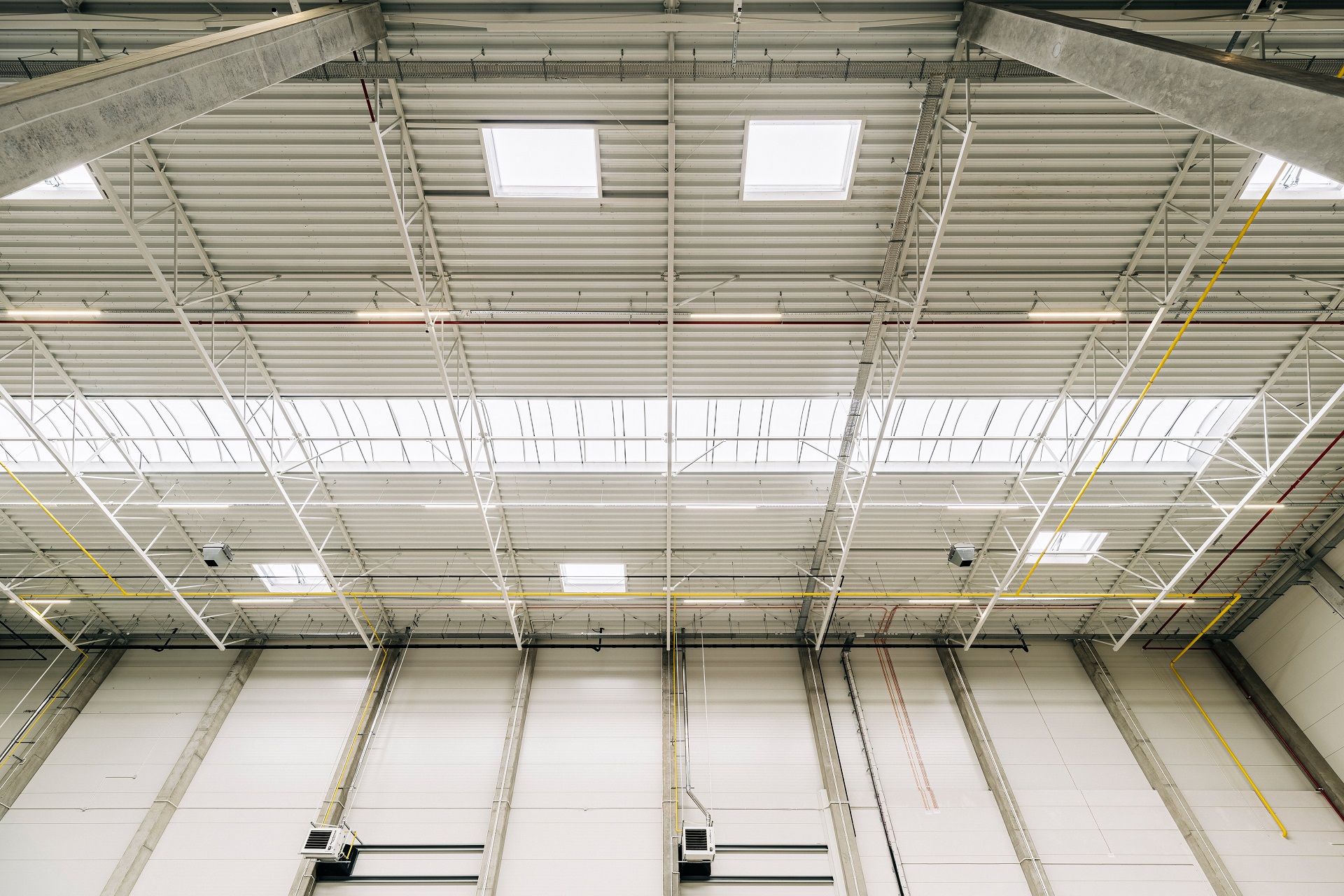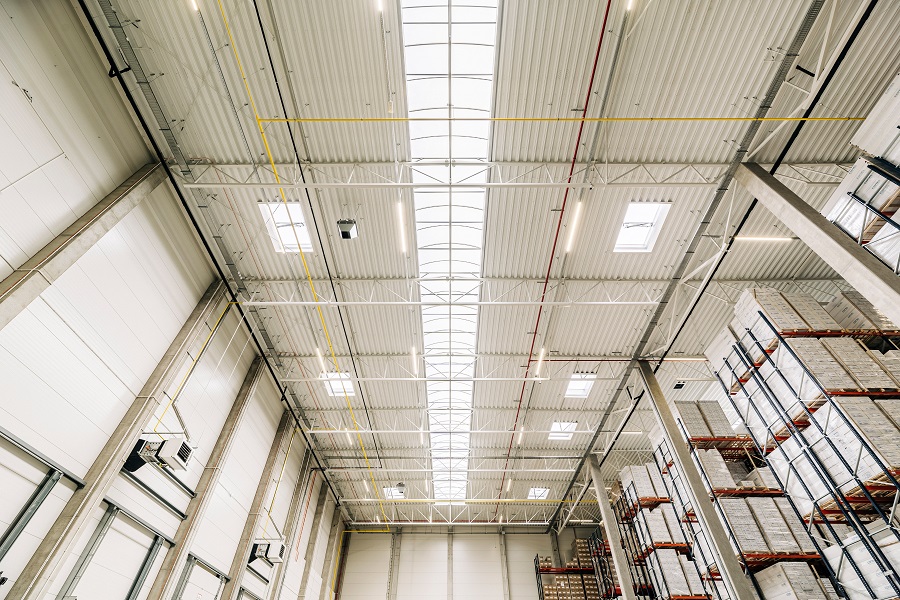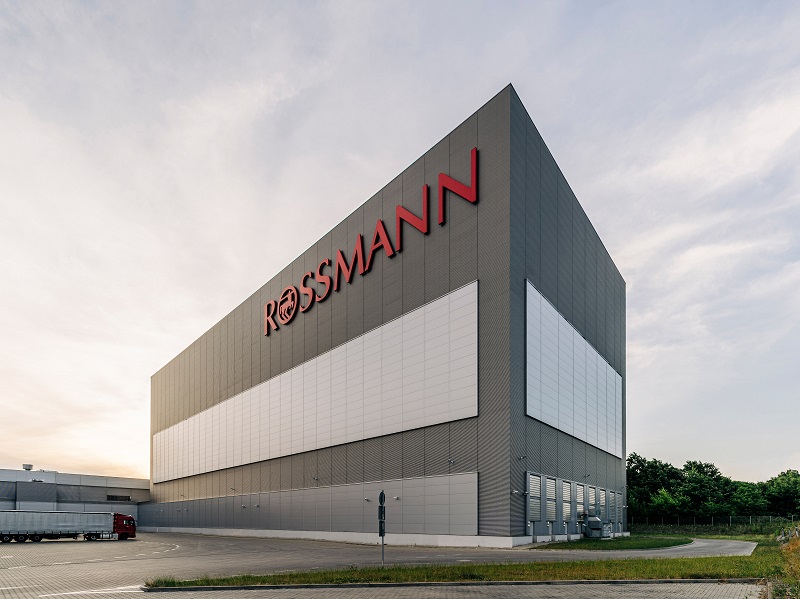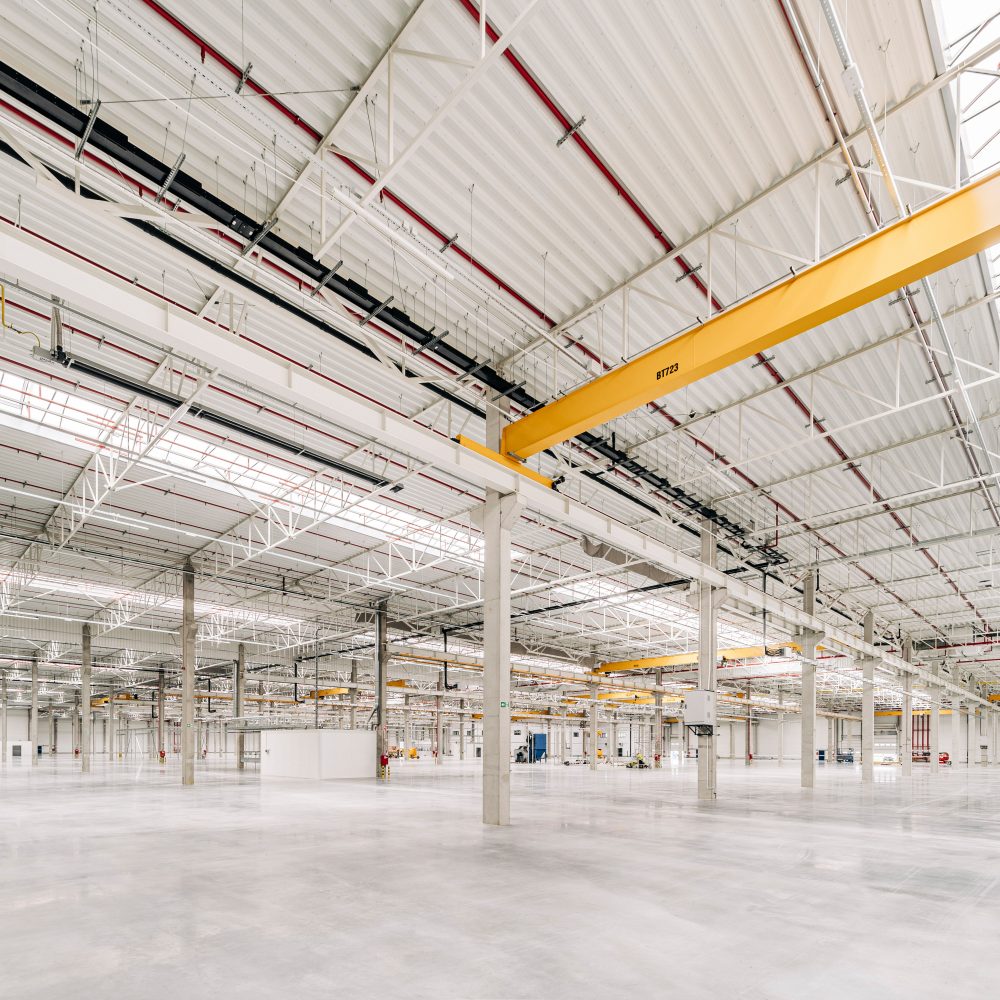
Steel halls are among the building structures used not only for the storage, movement and manufacture of goods by machines, but also as a temporary or permanent workplace for people. Lighting steel halls by allowing natural light into the building is desirable because of its beneficial effects on the working environment. Elements to ensure adequate lighting in the hall can be installed in the walls as well as on the roof. These include windows and strip wall lights and skylights. Each of the extra lighting elements mentioned will be discussed in the relevant subsection.
Lighting of the steel hall – requirements
Let us begin by mentioning a few more technical requirements resulting from the superior legislation imposing the necessity of illuminating buildings, including steel halls. In the most general terms, the illuminated area enclosed in a building is expressed by a certain fractional value resulting from the ratio of the translucent area of the illuminating element to the floor area it illuminates. Accordingly, for areas intended for human occupancy, this ratio should be no less than 1:8 (1 sqm of daylight per 8 sqm of floor area). For rooms where daylighting is required for the intended use, but which are not intended for human occupancy, the ratio is 1:12. The places for which a ratio of 1:12 is required may therefore be the storage areas of a steel hall, which do not constitute a permanent workplace, but which, because of the need to move people on an ad hoc basis, need to be illuminated accordingly. It is also worth mentioning that in some facilities, such as steel production halls, some processes may be run that require an environment completely devoid of natural light. If this is the case, it is possible to illuminate people’s workstations with electric lighting only, if permission is granted by the competent state regional health inspectorate, issued in agreement with the labour inspectorate.https://commercecon.pl/en/industrial-facilities/steel-halls/

Steel hall windows
As mentioned in the introduction, one method of providing sufficient natural light is to install warehouse windows and strip wall lights in the wall. The steel hall window means almost exactly the same thing as in normal construction, i.e. double, triple or quadruple glazing units divided by air voids installed in a frame. Strip wall lights differ from windows in that the translucent element is not glass, but polyurethane (usually cellular). Strip wall lights are usually lighter than windows and can reach considerable lengths (several tens of metres) without having to be divided by vertical frame mullions. In both cases, the wall light elements of the building are mounted on dedicated steel transoms – structural elements spanning between the mullions on which the windows or strip wall lights are erected as in traditional construction.
Skylights
Another method of introducing natural light into a steel hall is through the use of skylights. A skylight is understood to be a transparent element such as polycarbonate, usually of an arched (less commonly flat) shape, which rests on a thin base made of galvanised steel or painted with anti-corrosion paint. The base of the skylight rests on a trapezoidal roofing sheet, and its upper part, projecting above the roof slope, is shaped into a ‘sill’ that allows the installation of the skylight base insulation and its subsequent waterproofing treatment. Skylights can be subdivided by shape into individual skylights and strips of skylights. They differ fundamentally in the shape – individual skylights have typically dimensions of around 1.0 x 2.0 m to 2.0 x 3.0 m, while strips are 1.2 to 4.0 m wide and and have almost unlimited lengths (often several tens of metres). It is worth noting that dome-shaped skylights are characterised by increasing height, measured above the roof slope, as their width increases. Therefore, the choice of a wide light strip is likely to require taking into account, at the design stage of the roof structure, the additional snow load resulting from the presence of an obstacle/place of excessive snow accumulation (a skylight dome). The individual skylights also differ from the strips in that, due to their long length, the light strips often have a so-called “self-supporting base”, which rests on the main structure of the steel hall roof. Due to their size, which is usually smaller than that of a typical roof spacing (6.0 – 7.5 m), skylights and the trapezoidal sheeting require additional support by a steel substructure, the so called trimmer beam.
Windows or skylights in the hall – which is more efficient in illuminating
When choosing how to introduce natural light into the hall, it is worth bearing in mind that warehouse windows are only able to provide light to the hall at a limited depth. In cases where the depth of the room is considerable and amounts to several dozen metres or more, it becomes necessary to use supplementary lighting in areas that are far from the external walls through skylights. What is more, the skylights can be additionally equipped with electrically controlled devices that lift certain modules/segments of polycarbonate domes, with an additional role of ventilation or smoke flaps. When designing the location of windows and skylights one should be aware of the need to coordinate them with the building’s interior design plan. It is advisable to locate skylights in people’s workplaces and in shelving aisles in order to maximise light for passageways. On the other hand, windows and strip wall lights are worth locating, for example, in the side/loading area where there is heavy forklift traffic. Thus, when choosing between the use of windows and skylights the shape of the warehouse and fire safety aspects (smoke extraction) should be considered. In order to provide adequate light in a steel hall, it is often best to use both fittings, i.e. both windows and skylights.



